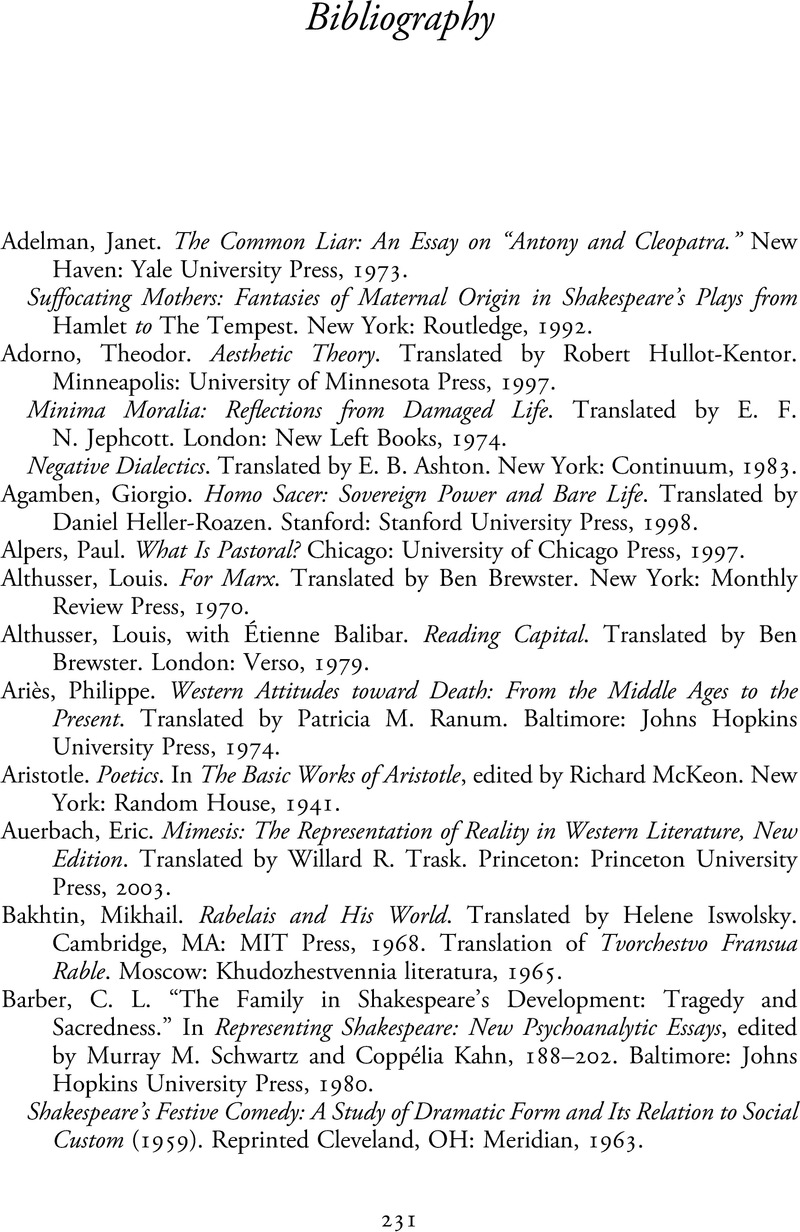Bibliography
Published online by Cambridge University Press: 02 June 2022
Summary

- Type
- Chapter
- Information
- Shakespeare's Dialectic of HopeFrom the Political to the Utopian, pp. 231 - 244Publisher: Cambridge University PressPrint publication year: 2022



